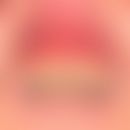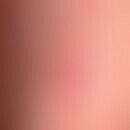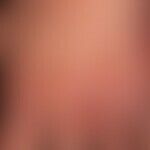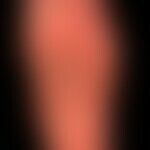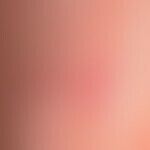Synonym(s)
HistoryThis section has been translated automatically.
Lever, 1953
s.a. Newsletter: Pemphigoids
DefinitionThis section has been translated automatically.
Group of chronic autoimmune diseases characterized by autoantibodies against hemidesmosal structural proteins (BP230, BP180 and others). Binding of the antibody to the antigen in question results in loss of epithelial adherence. Clinical hallmark of pemmphigoid disease is pruritic, subepidermal, large, turgid blisters. Sometimes association with neurologic disease (e.g., Parkinson's disease).
The most common representative of this group of diseases is bullous pemphigoid.
You might also be interested in
ClassificationThis section has been translated automatically.
Differentiated according to clinic and target antigen:
- Bullous pemphigoid with clinical variants (BP 180 = type XVII collagen; BP230=dystonin; plectin).
- Linear IgA dermatosis (BP 180 = type XVII collagen; LAD-1)
- Anti-p200 pemphigoid (laminin gamma 1)
- Anti-p105 pemphigoid (105 kDa protein)
- Anti-plectin pemphigoid (plectin)
- Anti-type IV collagen p emphigoid (type IV collagen)
- Lichen (ruber) planus pemphigoides (BP180; BP230, 200 KDa protein)
- Pregnancy pemphigoid/pemphigoid gestationis (BP180; BP230)
- Epidermolysis bullosa acquisita (type VII collagen)
- Scarringpemphigoid (mucous membrane pemphgoid) (type XVII collagen)
- Special form: scarring pemphigoid type Brunsting-Perry (BP 180; laminin 332/331; alpha6beta4 integrin; BP230; type VII collagen; uncein; 168 kDa protein; 45kDa protein)
Occurrence/EpidemiologyThis section has been translated automatically.
Among the autoimmunologically induced blistering diseases, the diseases of the pemphigoid group are the most common in central European populations. This is different in other populations (such as Iranian). In a larger study (1402 patients) 81% of Iranian patients had pemphigus vulgaris, 11% bullous pemphigoid, 4% pemphigus foliaceus.
For bullous pemphigoid, incidences vary between 1.2-6.6/100,000 population/year.
ManifestationThis section has been translated automatically.
The ages of onset of disease vary. For most pemphigoid variants, these are usually after the 7th decade. For gestational pemphigoid, they naturally occur during the gestational period. The rare bullous systemic lupus erythematosus predominantly affects young women. Linear IgA dermatosis also manifests well before the 7th decade of life. A childhood variant is the most common blistering disease in childhood. Epidermolysis bullosis acquisita can occur in childhood.
Direct ImmunofluorescenceThis section has been translated automatically.
Indirect immunofluorescenceThis section has been translated automatically.
Differential diagnosisThis section has been translated automatically.
LiteratureThis section has been translated automatically.
- Feliciani C et al (2015) Management of bullous pemphigoid: the European Dermatology Forum consensus in collaboration with the European Academy of Dermatology and Venereology. Br J Dermatol 172:867-876
- Gammon WR et al (1992) Immunofluorescence on split skin for the detection and differentiation of basement membrane zone autoantibodies. J Am Acad Dermatol 27: 79-87
Incoming links (7)
Anti-p105 pemphigoid; Anti-type iv collagen pemphigoid; Eosinophilia and skin; Immunofluorescence; Keratosis follicularis acneiformis, Siemens type; Pemphigoids; Pruritus cum materia;Outgoing links (18)
Anti-p105 pemphigoid; Anti-p200 pemphigoid; Anti-plectin pemphigoid; Anti-type iv collagen pemphigoid; Blistering skin diseases (overview); COL17A1 gene; dystonin; Epidermolysis bullosa acquisita; Lichen planus pemphigoides; Linear IgA dermatosis; ... Show allDisclaimer
Please ask your physician for a reliable diagnosis. This website is only meant as a reference.

